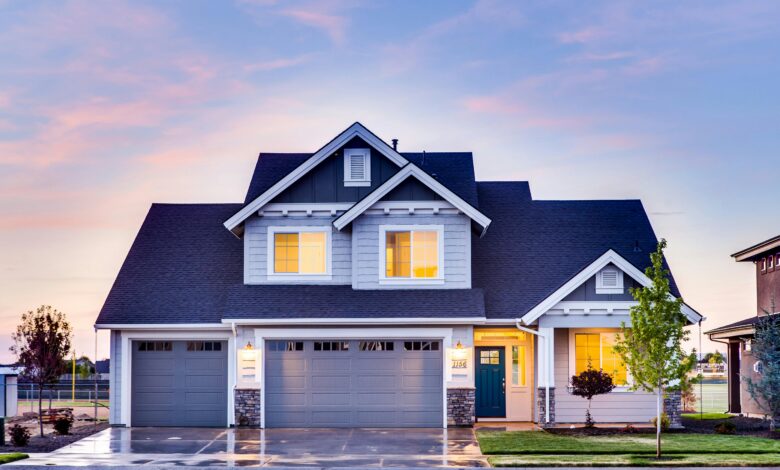How Does the Value of Your Home Affect Insurance Premiums?

When it comes to homeowners insurance, many factors influence the cost of your premiums. One of the most significant considerations is the value of your home. However, it’s important to understand that the relationship between your home’s value and your insurance premiums isn’t always straightforward. In this article, we’ll explore how the value of your home impacts insurance costs, what aspects of your home are considered, and other contributing factors that determine your premium.
The Basics of Homeowners Insurance
Homeowners insurance provides financial protection against damage or loss to your property and liability for accidents that occur on your property. The policy typically covers:
- Dwelling Coverage: Repairs or rebuilding of the structure of your home.
- Personal Property Coverage: Replacement of belongings damaged or stolen.
- Liability Protection: Legal and medical expenses if someone is injured on your property.
- Additional Living Expenses (ALE): Costs of temporary housing if your home becomes uninhabitable.
The cost of your premium depends on several factors, including the replacement cost of your home, its location, construction materials, and additional risks. Let’s dive into how your home’s value plays a role in determining these costs.
Replacement Cost vs. Market Value
One common misconception is that the market value of your home directly determines your insurance premium. In reality, insurers focus on the replacement cost of your home rather than its market value.
Replacement Cost
The replacement cost refers to the amount it would take to rebuild your home from scratch using similar materials and craftsmanship. This figure excludes the land value and focuses solely on reconstructing the physical structure. Insurers use this metric because it reflects the actual expense they might incur if your home is damaged or destroyed.
For example:
- If your home has a market value of $500,000 but the land accounts for $200,000 of that value, the replacement cost might only be $300,000.
- Your insurance premium will be based on the $300,000 replacement cost, not the full $500,000 market value.
Market Value
The market value includes both the land and the structure, as well as factors like neighborhood desirability, demand, and economic conditions. While market value affects your property taxes, it doesn’t directly impact your insurance premiums unless it correlates with higher replacement costs (e.g., luxury homes).
How Home Value Influences Insurance Premiums
Even though market value isn’t the primary driver of premiums, the overall value of your home still indirectly affects your insurance costs. Here’s how:
1. Size and Construction Quality
Larger homes or those built with high-end materials generally have higher replacement costs, which translates to higher premiums. For instance:
- A 3,000-square-foot house will cost more to rebuild than a 1,500-square-foot house.
- Homes constructed with custom finishes, marble countertops, or specialty roofing require more expensive repairs or replacements.
2. Location and Risk Factors
The geographic location of your home also influences premiums. High-value homes are often located in areas with elevated risks, such as:
- Coastal regions prone to hurricanes or flooding.
- Wildfire-prone zones.
- Urban areas susceptible to theft or vandalism.
Insurers assess these risks when calculating premiums, so a high-value home in a hazardous area may face significantly higher costs.
3. Coverage Limits
Higher-value homes typically require higher coverage limits to adequately protect the dwelling and personal property. For example:
- A modest home might need $200,000 in dwelling coverage, while a luxury home could require $1 million or more.
- Increased coverage limits result in higher premiums.
4. Additional Features
Luxury homes often come with unique features like swimming pools, home theaters, or smart home technology. These additions increase the replacement cost and, consequently, the insurance premium. Additionally, certain amenities (like pools) introduce new liabilities, further raising costs.
Other Factors That Impact Insurance Premiums
While the value of your home is a key determinant, it’s not the only factor insurers consider. Here are some additional elements that influence your premium:
1. Age and Condition of the Home
Older homes may have outdated wiring, plumbing, or structural issues, increasing the likelihood of claims. Insurers often charge higher premiums for older properties unless upgrades have been made.
2. Type of Foundation and Roofing Materials
Homes with sturdy foundations and durable roofing materials (e.g., metal or tile) are less risky to insure than those with wooden shingles or weak foundations.
3. Security Systems
Installing security systems, smoke detectors, sprinklers, or storm shutters can reduce your premium by mitigating potential risks.
4. Claims History
If you’ve filed multiple claims in the past, insurers may view you as a higher-risk client and raise your rates accordingly.
5. Credit Score
In many states, insurers use credit-based insurance scores to predict the likelihood of filing a claim. A lower credit score can lead to higher premiums.
Strategies to Lower Your Premiums
If you’re concerned about the cost of insuring a high-value home, there are steps you can take to reduce your premiums without sacrificing coverage:
- Increase Your Deductible: Opting for a higher deductible lowers your monthly premium, though you’ll pay more out-of-pocket in the event of a claim.
- Bundle Policies: Combining your homeowners and auto insurance with the same provider often qualifies you for discounts.
- Improve Home Safety: Invest in fire alarms, burglar alarms, or weather-resistant improvements to make your home safer and more appealing to insurers.
- Shop Around: Compare quotes from multiple insurers to ensure you’re getting the best rate for your needs.
- Review Coverage Annually: Regularly reassess your policy to ensure you’re not over-insured or under-insured.




